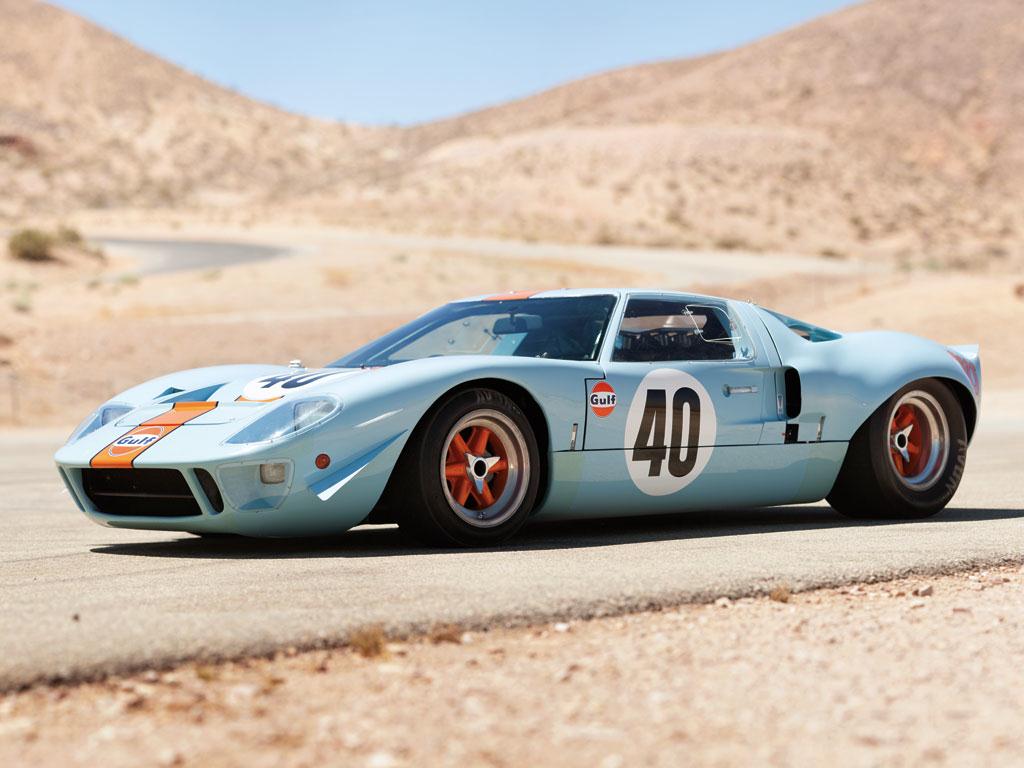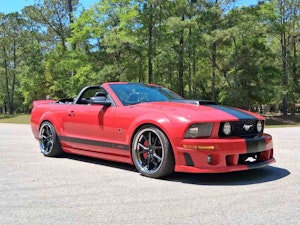Media | Articles
What’s behind the greatest photo ever taken?
Look. Look at it. There’s a Shelby Daytona Coupe, being pursued by a Porsche 904 GTS, while the Goodyear Blimp looms ominously in the background. It’s March 27, 1965, the 15th running of the 12 Hours of Sebring, and in his underdog Daytona, through the blinding rain, John Fitch is chasing down Phil Hill, the only American who ever won a Formula One race. Two of the greatest drivers, two of the greatest race cars, one of the greatest endurance races, and, arguably, the greatest blimp in the world. All in a single frame.
The Californian-born Hill had become “the first American” so many times: he was the first American to win at Le Mans, in 1958; the first American to drive for Ferrari, a year later; the first American to win the Italian Grand Prix, at Monza, for said Ferrari, a year after that.
In 1961, Hill was in the running to win the Driver’s Championship. At the Italian Grand Prix, the season’s penultimate race, it came down to just Hill or his teammate, Count Wolfgang von Trips. Just two laps in, at Monza’s 200-mph Curva Parabolica, Jim Clark’s Lotus bumped von Trip’s Ferrari. The Ferrari lost control and scythed into the crowd, killing von Trips and 15 spectators. The race continued. Hill’s Ferrari 156 “Sharknose” became the only one to finish, giving him the victory, and the honor of becoming the first American to win a Driver’s Championship.
But he was weary. “I no longer have as much need to race, to win,” he was quoted in Robert Daley’s book The Cruel Sport. Hill stayed in F1, but never won another race. He drove the GT40 at Le Mans, first for Ford, then for Shelby-American in 1965, the year he took a break from F1. When Sebring rolled around, Hill drove Shelby’s Daytona Coupe, fresh off a class victory at the 24 Hours of Daytona.
Marketplace
Buy and sell classics with confidence

Both Fitch and Hill had won the 12 Hours of Sebring three times each by the time this photo was taken. Fitch had beaten Hill to the punch. In 1953, Fitch had toppled the ruling class: the Aston Martin team and its DB3, to the surprise of team manager John Wyer. The first victory for an American team at Sebring—curious, considering it was on American turf. Fitch’s Cunningham C4R had beaten Aston Martin by just one lap.
(Wyer would later campaign the Ford GT40, in Gulf livery, after Shelby left. Study vintage motorsports long enough and the same people pop up in the most unexpected places.)
Fitch and Cunningham were intertwined in America, but in Europe, Fitch won his class at the Mille Miglia in 1955, driving for Mercedes-Benz alongside Fangio, Karl Kling, Moss, and Jenkinson, who would win the whole thing in spectacular fashion. Later that year, he raced at the 24 Hours of Le Mans, with co-driver Pierre Levegh. He was in the Mercedes pits with Levegh’s wife when he heard the crash: when Levegh’s Mercedes 300SLR went airborne, flying into a crowd of spectators—the worst disaster in racing history. Fitch went to go see the carnage, and when he returned, he didn’t have to say much to Madame Levegh. They knew.

Back in America, he bounced around from Corvette to Porsche. He set a production land speed record with a Corvette Special at Daytona Beach, then won his second Sebring. He rejoined Cunningham, who had moved onto Jaguars by then. In 1962, he won again at Sebring in an E-Type. And when Briggs Cunningham, the team founder, playboy, and potential Most Interesting Man In The World, switched to Porsche, Fitch was there in his 904 GTS.
In 1965, a record 50,000 spectators attended the 12 Hours of Sebring. By 8:30 a.m. the temperature had already approached 90 degrees, imparting the kind of personal swampiness found with vision quests. When the flag dropped, a Daytona Coupe stalled in the heat from vapor lock, then was immediately rear-ended. Sixteen laps in, an Iso Grifo lost its brakes and veered into the crowd, injuring two. Two drivers passed out from heatstroke. Cars began to drop out. A Corvette lost a wheel. A Volvo blew an engine, threw oil everywhere, then got hit by a Shelby Cobra and spun into an Alfa Romeo. And then, the rains came.
By 5 p.m., storm clouds opened a torrential downpour across the track. Cars began plowing through as much as eight inches of standing water, stalling out, flooded and short-circuiting. With zero visibility, drivers got lost. Lap times tripled; the average speed fell from 100 mph to less than 30. The remaining Iso Grifo hydroplaned into a bridge and was cut in half. (Despite not wearing a seatbelt, driver Mike Gammino walked away.) Drivers reported sitting in water up to their elbows. Hill was forced to stop and open a door to let the water slosh out, twice. The Shelby team later drilled drain holes in the floorboards.
When the checkered flag dropped at 10 a.m. the following day, Fitch placed 20th overall, fourth of the five 904 GTSs entered. Hill placed 21st. Both came through the storm with exactly 173 laps.
After 196 laps, the winners were Jim Hall and Hap Sharp of the Chaparral Racing Team, driving their Chevrolet-powered 2A to one of the pioneering team’s earliest victories. The Chaparrals had taken the race early on, and ran with it. Hall set a new lap record: 2 minutes, 59.3 seconds, breaking the three-minute barrier once set by a Ferrari. A year later, Hill joined the team. At the 1000 km of Nurburgring, Hill won driving the enclosed 2D, and a few months later at Laguna Seca, he won again in the high-winged 2E, an otherworldly, active-aero Can-Am spaceship that would change race cars forever.
20180202191916)
Fitch retired from racing in 1966, Hill a year later. They had tempered their enthusiasm with the carnage they witnessed. Hill went on to become the “grand old man” of Road & Track magazine, alongside Paul Frere, commenting on ABC’s Wide World of Sports and co-founding a successful classic car restoration shop. As for Fitch, the Le Mans disaster had been formative. Perhaps just as remarkable as his racing achievements was his invention of the Fitch barrier, those ubiquitous bright barrels at the end of highway off-ramps, filled with sand or water, that absorb impact—which he should know, since he insisted on testing them personally.
Lastly, the Miami-based Mayflower behind the photo was one of Goodyear’s most modern blimps, part of the GZ-19 series and the largest blimps yet built. When the storm arrived, the blimp nearly broke free of its moorings, standing up-ended on its nose. One must hope nobody was inside at the time. Its generation was retired in 1978 after the Mayflower collided with a set of power lines and crashed, although fortunately nobody was injured.
Later this year a new family of blimps will lift off, built by Zeppelin, marking the reunion of a once-lucrative partnership, soon ready to film Sebring’s well-organized legion of sweaty partygoers and maybe spook the occasional parrot.










